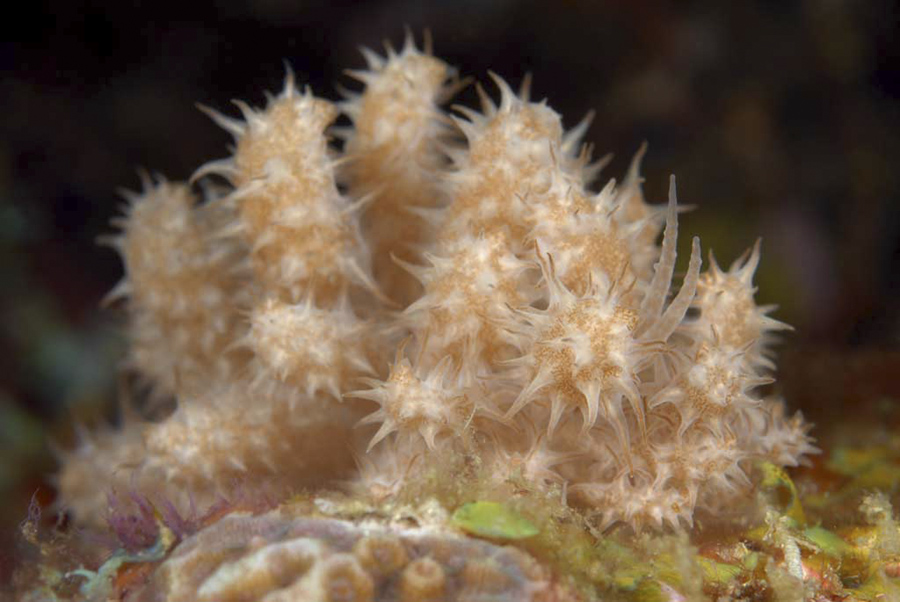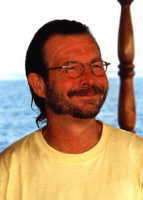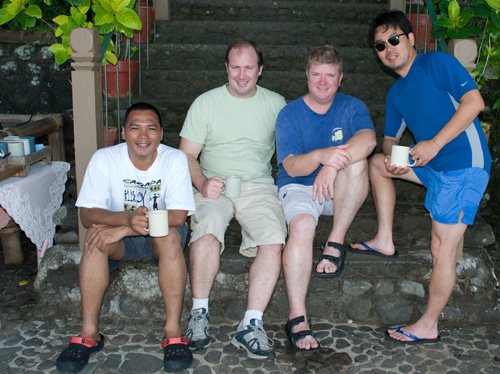 |
Phyllodesmium kohleri
Photo courtesy of Kevin Lee
Anilao, Batangas, Philippines
Oct., 2008
Phyllodesmium kohleri , Burghardt, Schrodl and Wagele, 2008
Erwin Kohler
Darmstadt, Germany
Erwin at the Maldives, 1999

|
Just recently, one of the coolest Phyllodesmium’s has been named recognizing good friend Erwin Kohler ,webmaster of the Opisthobranchs of the World and also Medslugs, a website devoted to Opisthobranchs of the Mediterranean. This amazing Phyllodesmium first came to our attention some time back with a posting by Gary Cobb from Australia. The cerata are what make this species amazing. Translucent white, you can see the highly branched digestive gland within. The surfaces of the cerata are covered with pointed tubercles, separated by reticulating white lines. Like other members of this cryptic subgroup, which includes Phyllodesmium jakobsenae and Phyllodesmium rudmani , it feeds on xeneid soft corals. |
John Greenamyer of Running Springs, Calif was kind enough to contribute a video of P. kohleri .
Reaching 20 mm in length this species is known from Australia, Indonesia, the Philippines and Japan.
Gig Harbor, Washington
Dec., 2008
WEBMASTER'S NOTES: Erwin is well deserving of the honor accorded above. Since I first came into contact with
Erwin some years ago, his untiring efforts to bring to the Web some sense of order and understanding of sea slugs have
always amazed me. Kudos are indeed in order for Erwin who has also been a frequent contributor to this site. If you
are reading this Erwin, I still have and wear with distinction, the sea slug T-Shirt you gave me at Frankfurt, Germany some years back!
Mike Miller
San Diego, CA
Dec. 2008
Peri, Scott, Mike, and Kevin

With the help of expert dive guide Peri Paleracio, 3 of us were able to photograph 100 species of nudibranchs during our trip. These species were found everywhere, from 0-130ft deep, in sand, muck, rock, corals and reef. I have no doubt many more species await us on our return trip. Scott Gietler
Send Kevin email at klq77@hotmail.comm |

|
